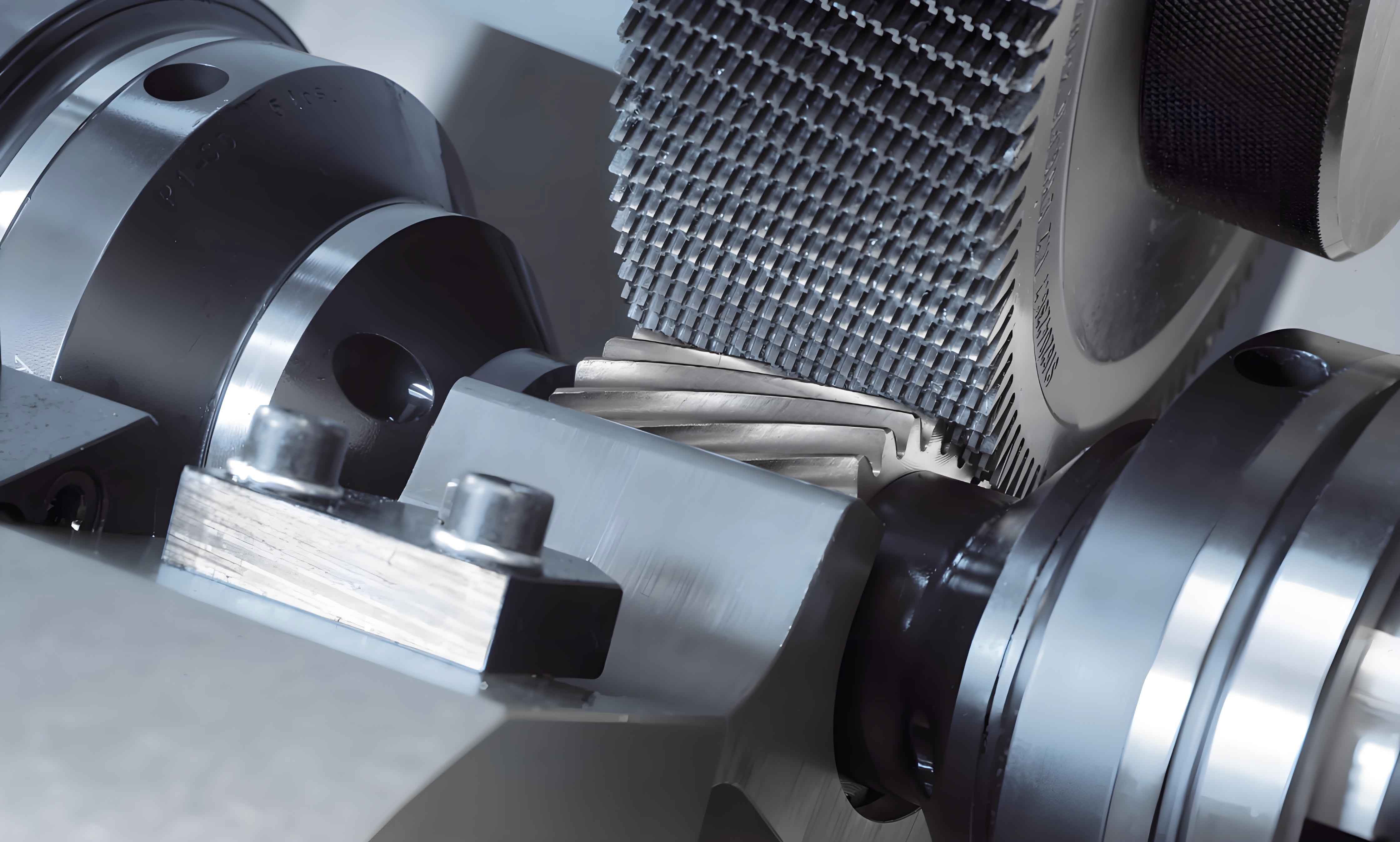Abstract
The intricacies of gear shaving, a precision finishing method employed prior to the final heat treatment of gears. It examines the frequent issues encountered during the gear shaving process, such as mid-concavity of tooth profiles, tooth surface roughness and galling, tooth root lifting, shaving cutter tooth breakage, and tooth pitch error exceedances. By utilizing tables and diagrams, the paper provides comprehensive explanations for the causes of these issues and proposes effective solutions.

1. Introduction
Gear shaving is a widely adopted method in the manufacturing of gear products due to its high precision, efficiency, and ease of machine adjustment. However, the process is influenced by various factors, including gear blank accuracy, machine fixture accuracy, cutter design, shaving cutter modification, and cutting parameters, which can lead to issues such as tooth profile and tooth orientation errors, tooth surface roughness, and tooth pitch accuracy deviations.
2. Common Issues and Solutions in Gear Shaving
2.1 Mid-Concavity of Tooth Profiles
2.1.1 Causes
During the gear shaving process, the meshing points between the shaving cutter and the gear under shaving are constantly changing, resulting in different forces and removed allowances at each contact area. This leads to irregular tooth profiles, with minor errors in even contact zones and increased errors in odd contact zones.
| Contact Zone | Error Magnitude |
|---|---|
| Even Zone | Low |
| Odd Zone | High |
Additionally, improper cutter design and modification, as well as machine accuracy and cutter installation precision, can contribute to mid-concavity.
2.1.2 Solutions
- Optimize the gear parameters to influence the shaving meshing state, ensuring longer even contact zones and shorter odd contact zones.
- Avoid design issues such as mismatch between cutter outer diameter and tooth thickness, excessive cutter tooth height, and unsuitable modification curves.
- Utilize reverse tooth profile modification of the shaving cutter to control tooth profile variations, with modification points determined by the tooth profile changes and modification amounts set to 2/3 to 1 times the deformation amount.
2.2 Tooth Surface Roughness and Galling
2.2.1 Manifestations and Causes
- Radial scratches on tooth tips due to small axial angles and high cutter speeds.
- Deep marks in the tooth direction caused by unreasonable razor lifting amount and cutting speed.
- Rough tooth surfaces with scratches due to improper chip flute arrangement, cutter dullness, small axial angles, radial runout during cutter grinding, magnetic attraction of chips, and high cutter speeds.
2.2.2 Solutions
- Ensure a reasonable shaving cutter spiral angle, with an axial angle of 10° to 15° for medium modulus gears, achieving optimal shaving effects and tooth surface quality.
- Select appropriate cutting parameters, prioritizing higher cutting speeds, suitable longitudinal feed rates, and smaller radial feeds.
- Enhance material hardness through conditioning or normalizing treatment to improve cutting performance and reduce cutter wear.
- Regularly sharpen the shaving cutter, ensuring a sharp cutting edge free of cracks, burns, burrs, and rust.
- Utilize cutting fluids with sufficient lubrication and fluidity, such as mineral oils with high-pressure additives and extreme pressure emulsified oils.
Table 1: Recommended Cutting Parameters
| Parameter | Recommended Range |
|---|---|
| Cutting Speed | 110 mm/min |
| Cutter Spindle Speed | 145-175 r/min |
| Longitudinal Feed Rate | 100-150 mm/min |
| Radial Feed | 0.02-0.04 mm per stroke |
2.3 Tooth Root Lifting
2.3.1 Causes
Improper shaving cutter design, mismatch between the cutter’s outer diameter and tooth thickness after re-grinding, unreasonable geometric parameters of the pre-shaving hob, excessive pre-shaving allowance, or rolling teeth with a unilateral tooth root platform can lead to tooth root lifting.
2.3.2 Solutions
- Design shaving cutters with minimal negative modification and prefer positive modification to avoid interference between the gear tooth root and the cutter tooth tip.
- Sharpen the shaving cutter strictly according to the re-grinding parameter curve to ensure matching between the cutter outer diameter and tooth thickness.
- Strictly control the pre-shaving allowance and timely sharpen the pre-shaving hob to prevent unilateral tooth root lifting.
2.4 Shaving Cutter Tooth Breakage
2.4.1 Causes
Burrs on the pre-shaved gear teeth surface, excessive shaving allowance, and excessively high cutting speeds or feed rates can cause shaving cutter tooth breakage.
2.4.2 Solutions
- Remove burrs from the pre-shaved gear teeth before shaving.
- Strictly control the pre-shaving allowance to minimize it.
- Select appropriate cutting speeds and feed rates.
2.5 Tooth Pitch Error Exceedances
2.5.1 Causes
Gear shaving has limited ability to correct tooth pitch errors and variations in common normal length. Radial runout errors of the gear circle can convert into variations in common normal length, and tooth pitch cumulative errors may slightly increase due to radial runout error correction.
2.5.2 Solutions
- Strictly control the tooth pitch errors and radial runout of the hobbed gears.
- Ensure the accuracy of the shaving fixture, machine transmission, and coaxiality of the two centers.
3. Conclusion
Gear shaving is a crucial step in gear manufacturing, requiring precise control of various parameters to achieve high-quality results. By understanding the common issues and their causes, implementing the proposed solutions, and utilizing the recommended cutting parameters and practices, manufacturers can significantly improve the quality and reliability of their gear products.
